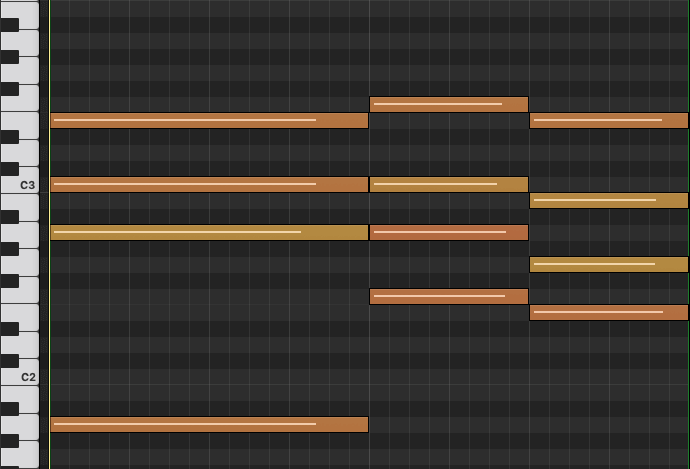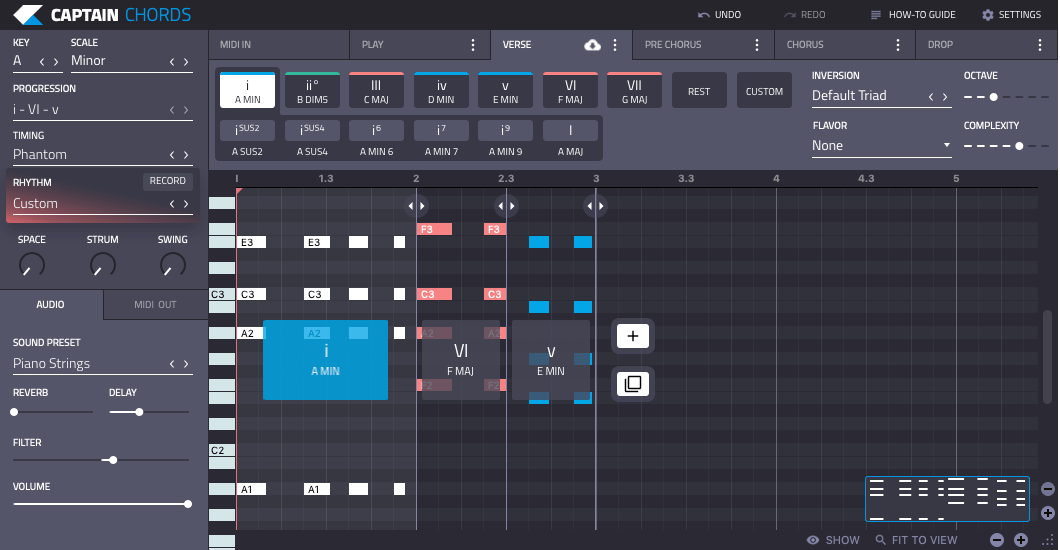Melody vs. Harmony

Face-Off
Melody and harmony are arguably the two most important elements in any music composition. This makes it imperative to fully understand each, how they interact with each other and as musicians, how we can create our own.
How they are defined
Let’s start by looking at the definitions of melody and harmony and how we can recognise them in existing songs.
Melody
A melody can be defined as a sequence of single notes that are musically pleasing to the listener. It’s the part of a song which is most memorable and is often referred to as the tune.
Harmony
Harmony is the combination of simultaneously sounded musical notes, also known as chords, to produce a pleasing effect, and one which acts as a support for the melody.
Based on these simple definitions, we can see that the main difference between melody and harmony is the use of simultaneously or singularly played notes.
Write Chords Faster with Captain Chords
- Use Captain Plugins to write your own Chord Progressions, Hooks, Melodies and Basslines
- Export to your DAW
- Available on Mac and Windows.
Example from a famous song
Now that we understand what defines both melody and harmony, we can examine a famous song and identify which instruments play each part.
Calvin Harris Feel So Close
In this song, the piano chords with the strummed effect play the harmony under the vocal. The vocal forms a melody for those sections – albeit a less memorable melody than the main melody.
When the vocal sections end, the main melody is introduced. This is a distorted guitar playing a two-note ostinato rhythm. Supporting this is a side-chained synth, which works in unison with the bass-line to harmonise the melody, thus forming a harmony.
Let’s recreate the melody and harmony of Feel So Close using Captain Plugins.
Piano Chords Harmony (Verse/Intro)
Main Melody
Main Harmony Layers + Main Melody
Pro Tip
You don’t need to use only one instrument to create the harmony. The notes played simultaneously to form the chords of the harmony could be from several instruments.
When composing, should I create the Melody before the Harmony?
In reality there’s no one-size-fits-all approach to composing music. The right method may often come down to inspiration, circumstance or what flows naturally.
For example, you might have a tune in your head and be quick enough to record or note down the idea. In this instance you’d most likely be creating the melody first. This is a very common practice.
Even when using this approach, you’re actually writing the harmony simultaneously.
But how is that possible, I hear you ask? In short, the melody can help outline what the harmony could be. This is due to the melody note often being part of a chord, making said chord suitable to act as a support of the melody.
Let me explain in more detail using the example below.
We’ve created a simple two-bar melody using Captain Melody in the key and scale of A minor, here’s what it looks like once added to our DAW.

It sounds like this:
As we can see/hear the melody uses the notes A, C and E in the first bar. These three notes when played together form the tonic of the key and scale, the A minor chord. Using the A minor chord to define the start of the harmony would be a great choice.
But why? The Melody just defined the chord. So this would be the safest, inside consonant harmonious, choice as all the notes are matching and A minor is a fine key to play in. However, you could make a case for F7 as those notes are also within that chord; still inside but a with a little bit more color.
Moving into the second bar the first note played in the melody is F and repeats again within half a bar. Looking at the most common chords in A minor, we can see that the ‘VI’ chord is F Major and would be a good candidate for this chord change.
Finally, the last two notes in the second bar are E and C. If following the aforementioned formula we could use either the ‘III’ or ‘v’ chord from the key and scale, C Major or E minor.
This also comes down to personal taste. For instance, the first half could be a Csus4 and the second half a C Major. Both would work well, but will create a different mood due to the relationship of different chords to the notes of the melody.
For this example, let’s go with E minor.
Here’s the harmony: A minor, F Major and E minor or i – VI – v

It sounds like this:
Note – Extra bass notes are added to the triads using the Complexity setting in Captain Chords. This makes chords sound extra rich and warm.
To make the harmony gel and interact better with the melody, we can use the ‘Rhythm Recording’ feature in Captain Chords.
This is how it looks.

And here’s how the melody and harmony sound like when mixed together:
Over to you, try using some of these techniques to create your own melody and harmony.
Write your own melodies and harmonies using Captain Plugins
It’s super easy to create your own ideas from scratch. Visit the official Captain Plugins homepage and see how they will help you explore music and write your own original productions.
